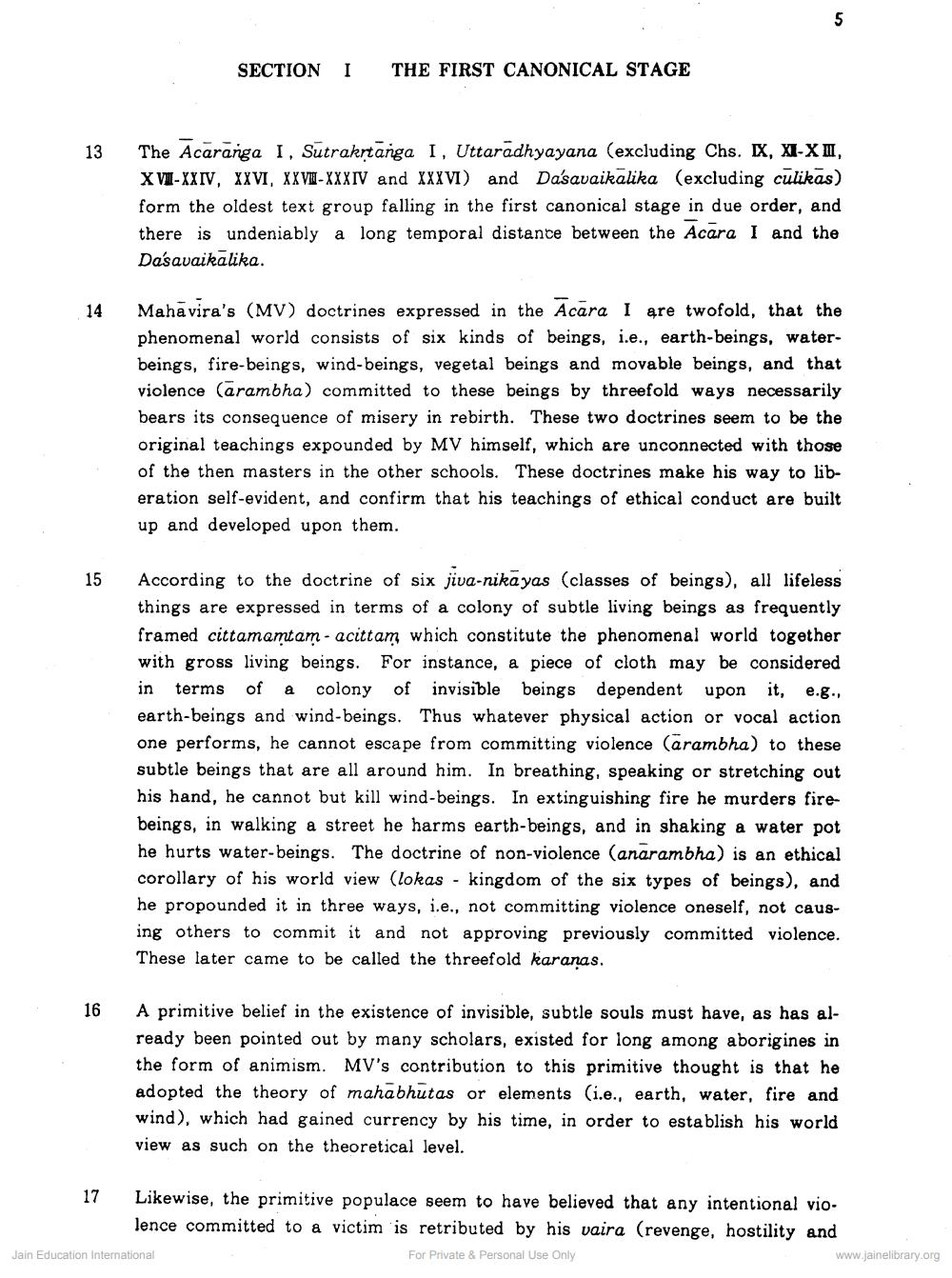________________
13
15
16
14 Mahavira's (MV) doctrines expressed in the Acara I are twofold, that the phenomenal world consists of six kinds of beings, i.e., earth-beings, waterbeings, fire-beings, wind-beings, vegetal beings and movable beings, and that violence (arambha) committed to these beings by threefold ways necessarily bears its consequence of misery in rebirth. These two doctrines seem to be the original teachings expounded by MV himself, which are unconnected with those of the then masters in the other schools. These doctrines make his way to liberation self-evident, and confirm that his teachings of ethical conduct are built up and developed upon them.
17
SECTION I THE FIRST CANONICAL STAGE
The Acaranga I, Sutrakṛtanga I, Uttaradhyayana (excluding Chs. IX, XI-XII, XVI-XXIV, XXVI, XXVI-XXXIV and XXXVI) and Dasavaikalika (excluding culikas) form the oldest text group falling in the first canonical stage in due order, and there is undeniably a long temporal distance between the Acara I and the Da'savaikalika.
5
According to the doctrine of six jiva-nikayas (classes of beings), all lifeless things are expressed in terms of a colony of subtle living beings as frequently framed cittamamtam-acittam which constitute the phenomenal world together with gross living beings. For instance, a piece of cloth may be considered in terms of a colony of invisible beings dependent upon it, e.g.. earth-beings and wind-beings. Thus whatever physical action or vocal action one performs, he cannot escape from committing violence (arambha) to these subtle beings that are all around him. In breathing, speaking or stretching out his hand, he cannot but kill wind-beings. In extinguishing fire he murders firebeings, in walking a street he harms earth-beings, and in shaking a water pot he hurts water-beings. The doctrine of non-violence (anarambha) is an ethical corollary of his world view (lokas kingdom of the six types of beings), and he propounded it in three ways, i.e., not committing violence oneself, not causing others to commit it and not approving previously committed violence. These later came to be called the threefold karanas.
-
Jain Education International
A primitive belief in the existence of invisible, subtle souls must have, as has already been pointed out by many scholars, existed for long among aborigines in the form of animism. MV's contribution to this primitive thought is that he adopted the theory of mahabhutas or elements (i.e., earth, water, fire and wind), which had gained currency by his time, in order to establish his world view as such on the theoretical level.
Likewise, the primitive populace seem to have believed that any intentional violence committed to a victim is retributed by his vaira (revenge, hostility and
For Private & Personal Use Only
www.jainelibrary.org




